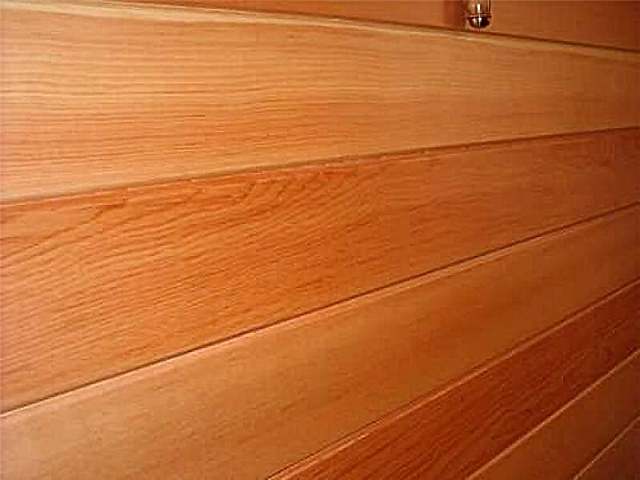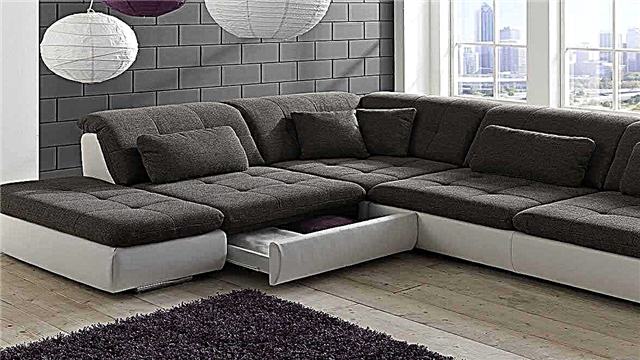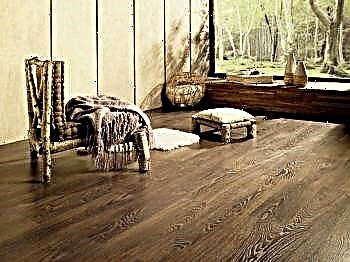Not every wood is suitable for building a bath. Let's look at the most famous conifers - this is pine, cedar and larch. At first glance, it seems that these tree species are of the same type and practically do not differ in anything, but this is not so. They have their differences in key indicators, which are very important for building a house or bath.
Larch

Siberian larch is one of the most valuable tree species. Externally, larch is similar to all conifers. The wood has a brownish tint. In density and strength, it is one third superior to pine and is a serious competitor to oak and ash. The fact is that larch wood is impregnated with resin, which is a natural antiseptic. Thus, this type of tree does not require additional processing, because nature herself took care of this. Therefore, baths and houses built of larch, stand for a long time. Larch perfectly tolerates moisture, does not rot, it is fundamentally different from pine.
Disadvantages of larch wood
- High thermal conductivity. The lower the coefficient of thermal conductivity, the better the material retains heat, the more slowly it gives off. Larch has a thermal conductivity of 130 mW / (m * K) versus 95 mW (m * K) of cedar. Larch houses and saunas are 45% colder than cedar.
- Relatively high price. Therefore, to reduce the cost of the final product, larch is often combined during construction with pine, using only in the initial stages. Logs, the floor and the first three crowns of the walls are made of larch, which are prone to decay (which often affects pine). However, it should be understood that the combined bath of larch and pine will not be warm. The reason for this is the high thermal conductivity of both pine and larch.
Cedar is considered the most elite scaffolding with great strength and low thermal conductivity. Compared to brick, cedar has an index of 1/5, i.e. 10 cm of cedar replaces 50 cm of brick. Therefore, baths built of cedar are very warm. Even without additional insulation in cedar baths, barrels, you can safely soar at -25 degrees!

In addition to strength, cedar has a number of very important advantages over its counterparts. Phytoncides secreted by cedar are considered medicinal. Houses chopped from cedar will be the cleanest and easy to breathe in.
Benefits of Cedar Wood
- Low thermal conductivity - keeps heat well
- Healing phytoncides for healing the body
- Strength
- Rot resistant
- No additional antiseptic treatment required
Cedar wood has a beautiful texture and a pinkish tint. It lends itself well to processing. If we compare pine and cedar from the point of view of resistance to decay and cracking, then the cedar has absolute superiority in this regard.
The disadvantages of cedar wood
- Relatively high price (more expensive than pine)
With all the advantages of cedar, there is a minus - cedar is more expensive than pine, which means cedar baths will cost more. But they will last longer and you can soar in them even in winter in cold weather.
Due to the antiseptic properties in cedar baths and houses there are no mold fungi and microbes. Cedar baths have a special advantage - an unusual aroma, light air and wellness steam.
Pine
Pine is a good building material, but it is inferior in strength and durability to larch and cedar. It is strong enough and, if you do not plan to bathe in the cold season, you will not freeze in a pine bathhouse. In addition, pine is the most affordable, so very often inexpensive saunas are made from pine.
Benefits of Pine Wood
- Price - pine baths are the cheapest
- Strength
- Ease of processing

However, unlike cedar and larch, pine need to be treated with antiseptic agents, as it is subject to decay. The upper layers of wood are softer, able to absorb moisture and are especially susceptible to “blueing” of the fabric. Such a bath will not last you long, but as an option for an inexpensive summer bath for 5-7 years, it is quite functional.
Disadvantages of pine wood
- Fragility
- High thermal conductivity - pine baths are “cold”, quickly give off heat. You can not bathe in the winter
- The need for additional treatment with antiseptic compounds
If you plan to bathe in the bath both in winter and in summer, then cedar is more suitable. The bath will serve for a long time, reliably and will help to improve the body.
Which tree is better for a bath - thermal conductivity table
For those who like numbers and specifics - below is a comparative table of the thermal conductivity of wood.
The lower the coefficient of thermal conductivity - the worse the material transfers heat. This is exactly what we need, so that the walls of the bathhouse do not give off heat to the outside. For example, the coefficient of thermal conductivity of vacuum is 0; it does not transfer heat. This property is used in thermoses (when double walls are made) to maintain the temperature of the contents.
The table shows that the best choice of wood for a bath available in Russia is cedar. It has the lowest value of thermal conductivity due to the small-layer structure, which retains heat well.
Table of thermal conductivity of wood of various species
| Wood | Thermal conductivity, in mW / (m * K) |
| Cork tree | 45 |
| Cedar | 95 |
| Spruce | 110 |
| Larch | 130 |
| Birch | 150 |
| Linden | 150 |
| Fir | 150 |
| Pine (across the fibers) | 150 |
| Poplar | 170 |
| Maple | 190 |
| Oak (across the fibers) | 200 |
| Oak (along the fibers) | 400 |
| Pine (along the fibers) |









































